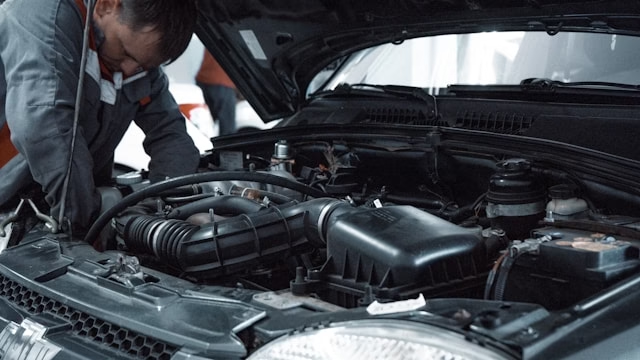What To Expect During An Auto Repair Mount Vernon NY Visit
A vehicle is often one of the most significant investments an individual makes, and its proper maintenance is paramount to safety, reliability, and longevity. For residents of Westchester County and the surrounding areas, ensuring this care falls to trusted local professionals. Understanding the standard procedures and what to expect can demystify the process, building confidence and trust between the customer and the automotive technicians.
Read on to learn what to expect during an auto repair Mount Vernon NY visit.
The Initial Point of Contact: Scheduling and Preliminary Discussion
The process typically begins with a phone call or online service request. During this initial contact, the service advisor will gather essential information, such as the vehicle’s make, model, year, mileage, and most importantly, a detailed description of the concern.
Providing clear and precise information can allow the advisor to prepare for the visit, whether it’s an unusual noise, a warning light on the dashboard, or a scheduled maintenance item. They may also inquire about the vehicle’s service history. This preliminary discussion can help allocate the appropriate time for the appointment and ensure the necessary technical resources are available.
Moreover, a visit to a reputable service center for auto repair in Mount Vernon, NY is designed to be a comprehensive, transparent, and educational experience from the moment an appointment is scheduled to the final review of the completed work.
The Check-In and Vehicle Write-Up Process
Upon arrival at the facility, the customer is greeted by a service advisor who is the primary point of contact throughout the repair process. The advisor will perform a detailed “write-up,” documenting the customer’s complaints and requests. This is a critical step where clear communication is vital.
To ensure nothing is overlooked, many establishments accompany the customer on a quick visual inspection of the vehicle’s interior and exterior, noting any existing damage like scratches or dents on a multipoint inspection form. This practice can help protect the customer and the shop by establishing the vehicle’s condition before any work is performed.
The Diagnostic Phase: Uncovering the Root Cause
After check-in, the vehicle is assigned to a certified automotive technician. The diagnostic phase is the cornerstone of effective auto repair. It moves beyond simply addressing symptoms to identifying the root cause of a problem. Technicians also utilize a combination of extensive experience, advanced diagnostic scan tools, and technical service bulletins to pinpoint issues accurately.
For complex problems, this may involve a systematic process of testing electrical circuits, checking for diagnostic trouble codes, or performing road tests to replicate the customer’s concern. This methodical approach can help prevent unnecessary part replacements and ensure the repair is correct the first time, ultimately saving the customer time and money.
The Estimate and Authorization for Repairs
Once the diagnosis is complete, the service advisor contacts the customer with a detailed findings report. This communication should clearly explain the problem, the recommended automotive repair solution, the estimated cost for parts and labor, and a projected completion time. A trustworthy service center will explain the urgency and necessity of the repairs in understandable terms, differentiating between critical safety issues and recommendations for future attention.
No work beyond the initial diagnostic fee should commence without the customer’s explicit approval. This transparent authorization process is a hallmark of professional and ethical auto repair practices, ensuring no surprises when the final invoice is presented.
The Repair and Quality Control Procedures
With authorization granted, the technicians proceed with the approved auto body repairs. Modern repair facilities source quality parts, often offering customers a choice between new Original Equipment Manufacturer (OEM) parts, aftermarket equivalents, or certified recycled components. Skilled technicians follow manufacturer-recommended procedures and use specialized tools to perform everything from routine oil changes to complex engine or transmission work.
Following the repair, a rigorous quality control check is standard protocol. This may involve a test drive by the technician or a foreman to verify that the initial concern has been fully resolved and that no new issues have arisen during the service.
The Check-Out and Final Explanation
The final phase of the visit is the check-out process. The service advisor will present the customer with a detailed invoice that itemizes all work performed, parts installed, labor charges, and taxes. They should take the time to walk the customer through each line item, explaining what was done and why. The advisor will also typically provide a summary of the technician’s notes and may show the customer the old parts that were replaced.
Furthermore, this is an opportunity to discuss any additional maintenance recommendations noted during the multipoint inspection, providing a proactive plan for future service needs to help maintain the vehicle’s performance and value. Finally, payment is processed, and the vehicle is returned clean and ready for the road.
Final Thoughts
A visit to a professional automotive service center is a collaborative effort focused on vehicle health and customer service and education. By keeping the information mentioned above in mind, customers can approach their next service appointment with the confidence that their vehicle is in capable hands.



